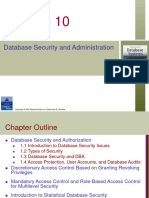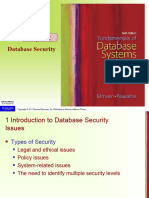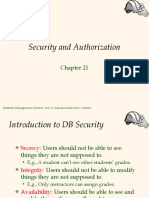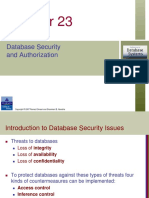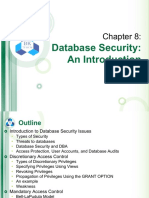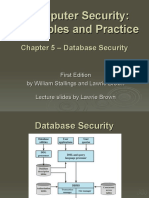0% found this document useful (0 votes)
68 views31 pagesAccess Control-Security
The document discusses database security issues and control measures. It covers access control using user accounts and passwords, as well as discretionary and mandatory access controls. Mandatory access control classifies data and users based on security levels, and role-based access control manages permissions for organizational roles.
Uploaded by
laila bdourCopyright
© © All Rights Reserved
We take content rights seriously. If you suspect this is your content, claim it here.
Available Formats
Download as PDF, TXT or read online on Scribd
0% found this document useful (0 votes)
68 views31 pagesAccess Control-Security
The document discusses database security issues and control measures. It covers access control using user accounts and passwords, as well as discretionary and mandatory access controls. Mandatory access control classifies data and users based on security levels, and role-based access control manages permissions for organizational roles.
Uploaded by
laila bdourCopyright
© © All Rights Reserved
We take content rights seriously. If you suspect this is your content, claim it here.
Available Formats
Download as PDF, TXT or read online on Scribd
/ 31


